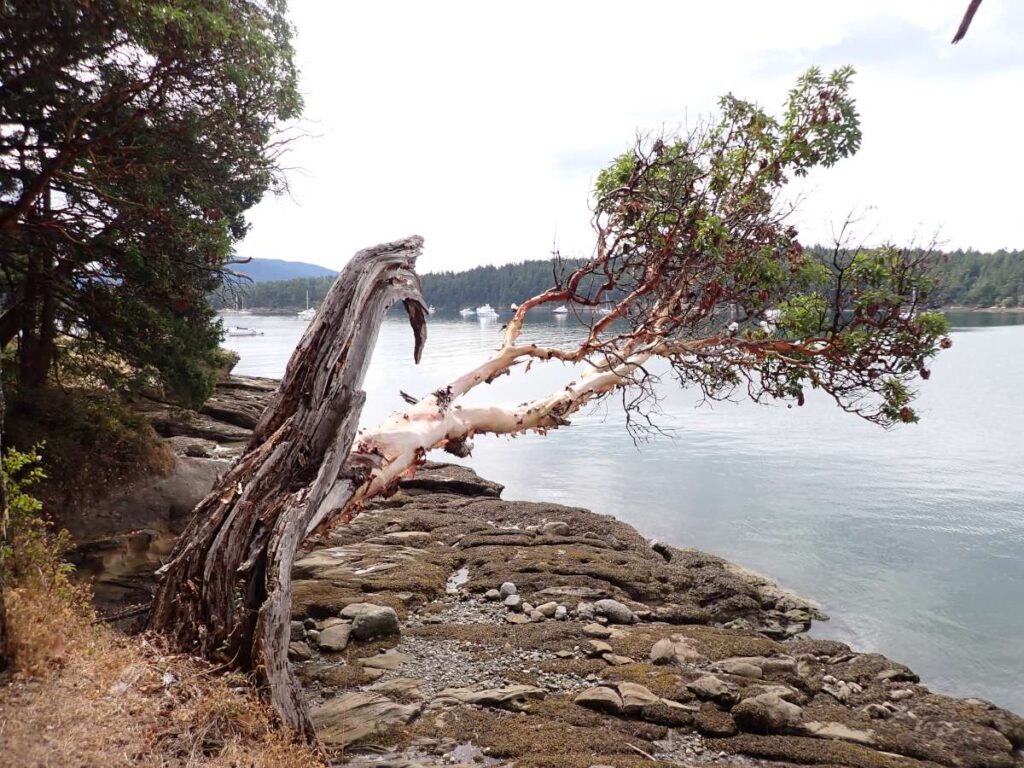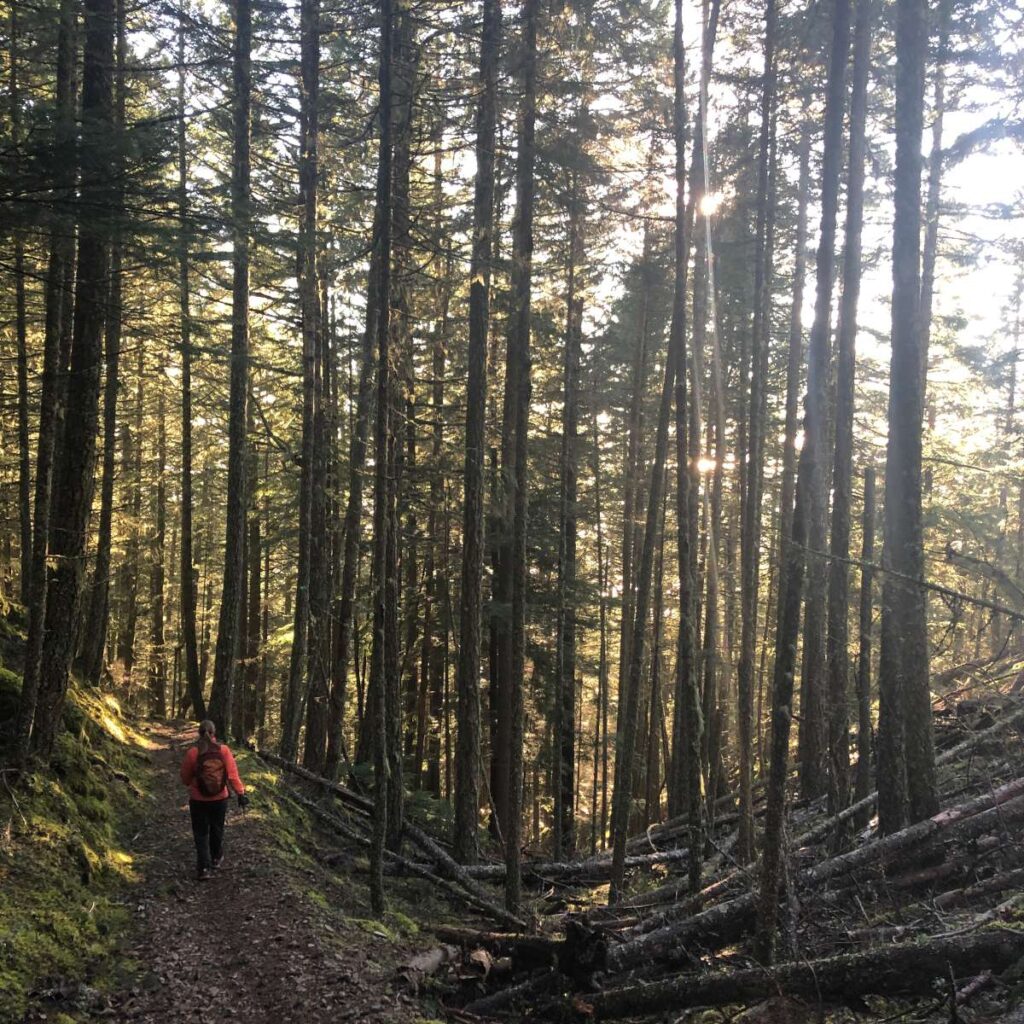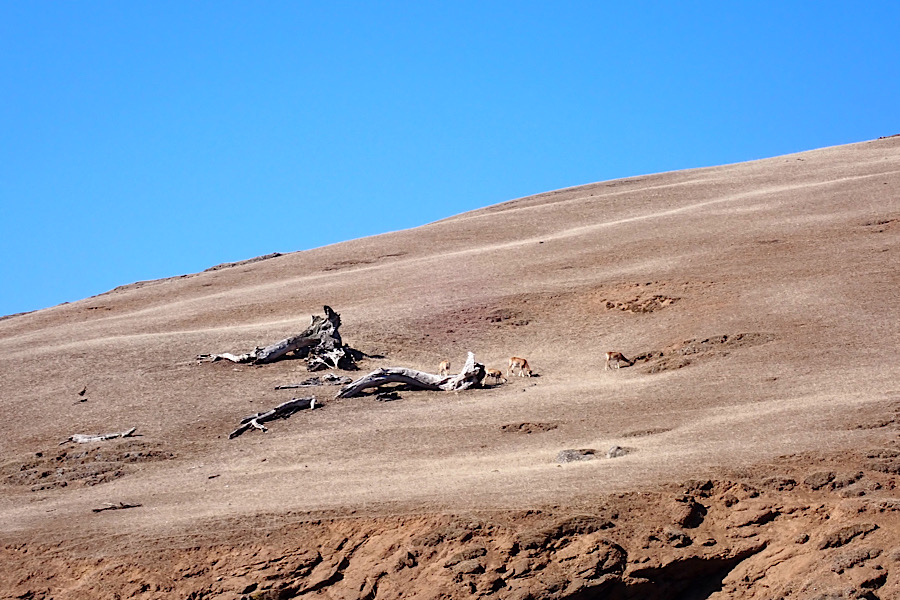You have to notice the madrones.

Even an ardent arborophobe is persuaded to gaze with satisfaction upon a madrone (or madrona, if you like adding syllables to your words). Your eye is drawn to them as you pass between the islands. Arthritic and graceful like your favorite aunt, with tawny, red bark, peeling off the trunk in long strips, and luscious green, broad leaves that hang limp on the tips of the branches. I think of the madrones as the islands’ botanical sentinels. Their roots are like hands, knuckles flexed and gripping the earth as they dangle out over a cliff face, showing their splendor to all who pass by.
The center of the islands, however, is undoubtedly ruled by the conifers, mostly Douglas fir and western hemlock, but you’ll also find the occasional western red cedar. There are lots and lots of conifers, what most people call pine trees, or what has given Washington the moniker as the Evergreen State. These are the trees we think of as “Christmas trees”. They have needles for leaves, and instead of flowers, they use cones to do their reproducing, which is why we call them con(e)-ifers.

Thunderous, conifers dig deep into the dry soil as they grow tall, straight and regal. Silent in the sun and chatty when the breeze picks up, the forests are filled with nothing but conifers. Lots of them. They’re ubiquitous. Not like the New England eastern hardwood forests of my youth, with their myriad of broad leafed trees, oaks, maples, beeches, and even the poor chestnuts and elms, still sick a century later from a dalliance with foreign pathogens. A northward extension of the great Appalachian forests, themselves the remnants of tropical rainforests abandoned by the last ice age, the eastern hardwoods are speciose, diverse in taxonomy and form. Not like the conifer forests; you get a couple species and that’s it.
These conifers are refugees themselves, descendants of the great northern boreal forests. Circumpolar and spread across continents, the boreal forests with their mighty conifers are draped across the shoulders of the globe from Siberia to Canada. These forests start where the deathly winters leave the ground in a permanent state of freeze, and then extend southward to where grasses rule the land and winters are more unpredictable. But in a few, special places, the climate lets them wander farther south. The west coast of North America is one of these special spots. The cool, wet winters and the warm, dry summers are ideal for these drought-hardy beings. They keep their needle-like leaves even through the darkest part of winter, eking out bits of glucose in the slightest photosynthesis, but are tough enough to survive the prolonged droughts that come every summer when the winds shift from south to north. That’s when the high pressure builds over the Pacific Ocean, whose cold waters provide little moisture to the air, starving the sky and the land of water for months at a time. In most years, Seattle, Portland and San Francisco – combined – get less than three inches of rain during the whole month of July. Thus summer days in the San Juans are often warm and dry, with heart-achingly blue skies always perched overhead. Surrounded by a natural air conditioner of cold, deep water, summer days are never too hot and the nights are always cool and pleasant, which makes for pretty nice conditions for us humans, similar to our ancestral savannah homes in Africa. But for a tree, whether a madrone or a conifer, it’s just not all that easy.

Mary H Mele
WOW! Thank you.